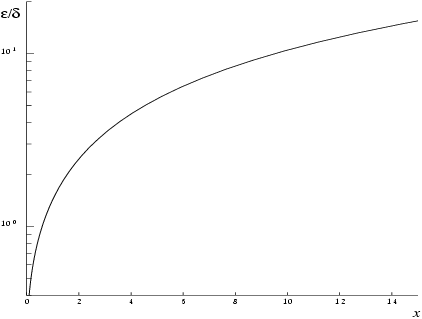NAG CL Interface
s18acc (bessel_k0_real)
1
Purpose
s18acc returns the value of the modified Bessel function .
2
Specification
| double |
s18acc (double x,
NagError *fail) |
|
The function may be called by the names: s18acc, nag_specfun_bessel_k0_real or nag_bessel_k0.
3
Description
s18acc evaluates an approximation to the modified Bessel function of the second kind .
Note: is undefined for and the function will fail for such arguments.
The function is based on five Chebyshev expansions:
For
,
For
,
For
,
For
,
For
near zero,
, where
denotes Euler's constant. This approximation is used when
is sufficiently small for the result to be correct to
machine precision.
For large , where there is a danger of underflow due to the smallness of , the result is set exactly to zero.
4
References
5
Arguments
-
1:
– double
Input
-
On entry: the argument of the function.
Constraint:
.
-
2:
– NagError *
Input/Output
-
The NAG error argument (see
Section 7 in the Introduction to the NAG Library CL Interface).
6
Error Indicators and Warnings
- NE_ALLOC_FAIL
-
Dynamic memory allocation failed.
See
Section 3.1.2 in the Introduction to the NAG Library CL Interface for further information.
- NE_INTERNAL_ERROR
-
An internal error has occurred in this function. Check the function call and any array sizes. If the call is correct then please contact
NAG for assistance.
See
Section 7.5 in the Introduction to the NAG Library CL Interface for further information.
- NE_NO_LICENCE
-
Your licence key may have expired or may not have been installed correctly.
See
Section 8 in the Introduction to the NAG Library CL Interface for further information.
- NE_REAL_ARG_LE
-
On entry, .
Constraint: .
is undefined and the function returns zero.
7
Accuracy
Let and be the relative errors in the argument and result respectively.
If
is somewhat larger than the
machine precision (i.e., if
is due to data errors etc.), then
and
are approximately related by:
Figure 1 shows the behaviour of the error amplification factor
However, if is of the same order as machine precision, then rounding errors could make slightly larger than the above relation predicts.
For small , the amplification factor is approximately
, which implies strong attenuation of the error, but in general can never be less than the machine precision.
For large , and we have strong amplification of the relative error. Eventually , which is asymptotically given by , becomes so small that it cannot be calculated without underflow and hence the function will return zero. Note that for large the errors will be dominated by those of the standard math library function exp.
8
Parallelism and Performance
s18acc is not threaded in any implementation.
None.
10
Example
This example reads values of the argument from a file, evaluates the function at each value of and prints the results.
10.1
Program Text
10.2
Program Data
10.3
Program Results

